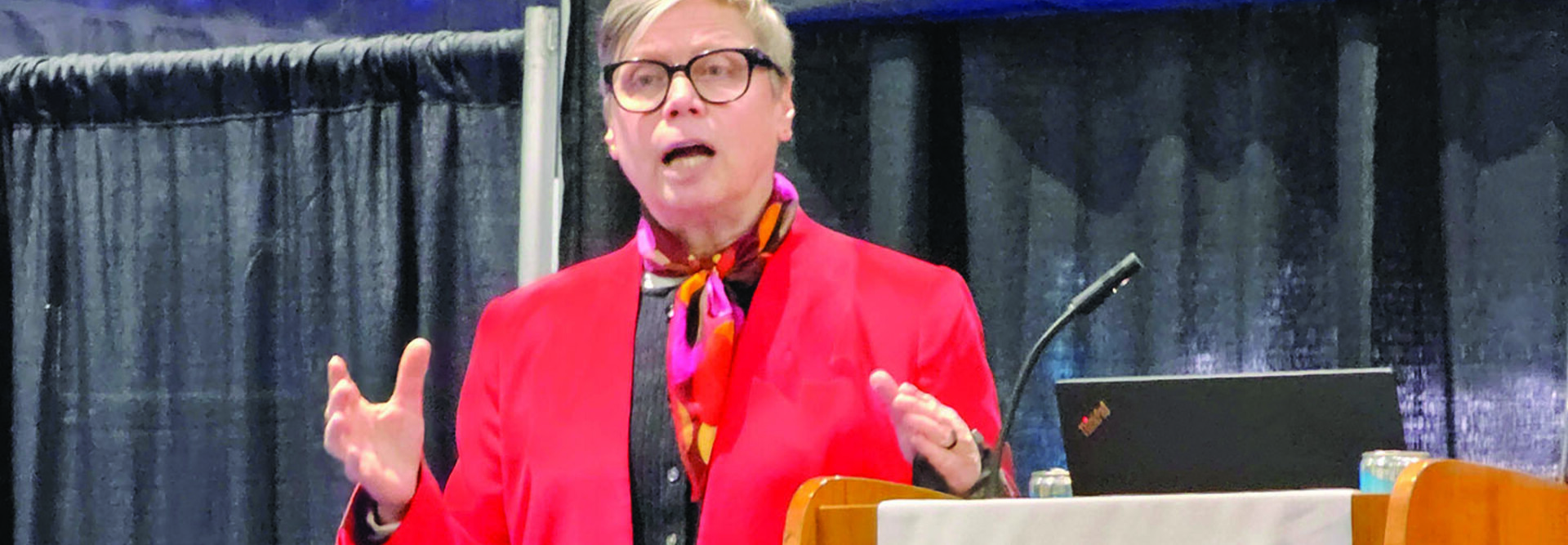The Navy is moving on from its 15- to 20-year-old IT systems, and only adding new ones when there’s a warfighting need, to shrink its attack surface, according to its CIO.
Speaking at WEST 2025 in San Diego on Tuesday, Jane Rathbun said the Navy is leaning into the “amazing” cloud platforms it has already built, such as Flank Speed Azure.
“Buy and build once, use often,” has become the Navy’s tagline as it focuses on “cattle driving,” the process of ridding the branch of technical debt and moving to a new lifecycle governance model for its business mission.
“We want to have cloud by type and impact level,” Rathbun said. “But we don’t want a hundred landing zones per type of cloud.”
The Navy’s emphasis on cattle driving was just one takeaway from WEST 2025. Here are three more.
Click the banner below to learn about advancing cloud deployments.
Ensuring Capabilities Are Navy-Ready
As the Navy considers which capabilities to provide warfighters, it needs to test them in simulated denied, disrupted, intermittent and limited-impact (DDIL) environments or environments where satellite communications are bad to ensure they’re combat ready.
While the department has labs, another option is CDW Government’s Naval Innovation Center at Point Loma in San Diego. There, former Navy sailors now with CDW Government help test technologies that customers and partners bring in, set up virtual machines and conduct demonstrations.
The center boasts five data center racks and technologies from a wide range of vendors on hand, and customers and partners can reserve space free of charge.
“This is our way to help the Navy see technology very rapidly,” said Ron Stimbert, agency consulting architect with CDW Government. “It can be very difficult for them to procure stuff, to go into their own labs just for a demo, and it can be very expensive for them. But we can integrate it.”
Click the banner below to keep up with FedTech as an Insider.
Moving From a Compliance Mindset to Cyber Readiness
The Navy is very aware of the government’s looming 2027 deadline for all of the Department of Defense to transition to zero-trust security, and it knows that core identity services are essential. Harder to achieve will be its goal of pivoting from a compliance mindset to cyber readiness.
“Compliance does not secure your environment,” said Navy Deputy CIO Barry Tanner.
The branch plans to engrain cybersecurity as a core departmental capability by managing it as a shared portfolio. This is in part because fleet cyber inspections revealed that programs of record failed to meet the department’s standards about half the time.
“Leaving every program to figure it out on their own simply does not work,” Tanner said, and it places sailors at risk.
The first step for the Navy is understanding what roles, processes, data and systems its cyber operators need.
“How can we economize, how can we optimize our cybersecurity capabilities and get the most out of them for the least amount of money?” Rathbun said.
Finding Cyber Talent in Fresh Places
Closely tied to cyber readiness is the Navy’s foundational need to attract cyber talent by showing them it’s all-in on innovation.
“We are unfortunately behind in this space and working hard to catch up,” Rathbun said.
The DOD Cyber Excepted Service is helping the Navy get better at understanding the workforce’s needs, after which it needs to identify nontraditional recruitment sources, get those workers on task and move them.
Plenty of potential cyber talent currently works in parts of the Navy that aren’t yet aligned with its recruitment goals.
“We see you,” Rathbun said. “We want some of you.”
To learn more about WEST 2025, visit our conference page. You can also follow us on the social platform X at @FedTechMagazine to see behind-the-scenes moments.
















